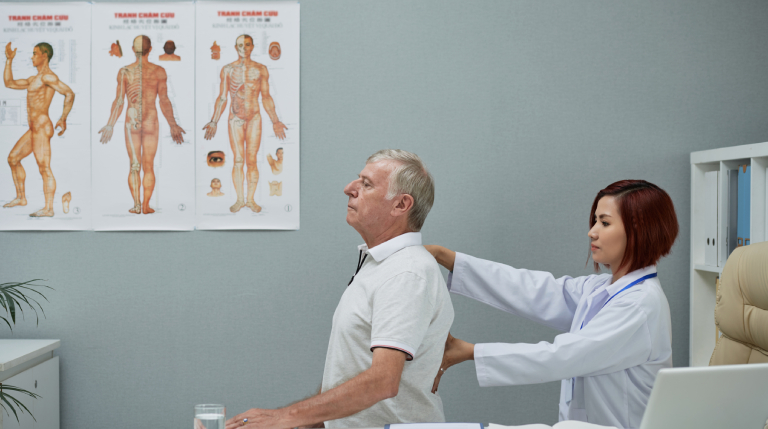The healing process in Direct Anterior Approach for total hip Arthroplasty: The direct anterior approach for total hip arthroplasty, also known as hip replacement surgery, is a technique that accesses the hip joint from the front (anterior) of the body. This differs from the posterior approach (from the back) and the lateral and anterolateral approach (from the side). Knee replacement after ACL reconstruction is enabled via YK Orthopaedics’ commitment to you.
This muscle-sparing approach allows the surgeon to reach the hip joint by separating rather than cutting the muscles. This potentially leads to less muscle damage, resulting in less postoperative pain and a faster recovery. Superpath hip replacement is a state-of-the-art provision enabled at only the best orthopaedic clinics.
This technique involves a smaller incision, leading to less visible scarring and lowering the risk of wound-related issues. The direct anterior approach gives surgeons a clear view of the hip joint, which may enhance the accuracy of artificial joint placement, improving its function and lifespan.
However, it’s not a one-size-fits-all solution. Factors like a patient’s body shape, bone structure, and past AVN surgeries can influence the suitability of this method. Further, the procedure demands a high skill level from the surgeon due to its technical demands.
Robotic hip replacement: In this blog, we will walk you through the healing process of the total hip arthroplasty direct anterior approach, which is proven to offer faster recovery, less pain, and a smoother return to daily activities when executed by a licensed surgeon trained to identify the best approach for your case.
Understanding the Post-op recovery timeline: The recovery timeline for the direct anterior approach for total AVN treatment is similar to that of other hip replacement techniques. However, due to the procedure’s muscle-sparing nature, patients often experience a quicker return to normal activities. Here’s a generalized timeline, but individual recovery rates will vary.
Looking at the time frame and Recovery process
Immediately after the surgery: Rehabilitation begins immediately after AVN surgery, with the doctor encouraging you to take up light activity under supervision to aid recovery. The average hospital stay ranges from 1 to 2 days, with same-day discharge possible in some instances. There may be recommendations for procedures like rotator cuff surgery, depending on the patient & doctor’s interaction and a case-by-case basis.
First 48 hours: Your routine will include assisted movement, such as standing and short walks. These actions aim to strengthen muscles and boost circulation, which is crucial for healing.
3-4 days: Pain is typically manageable, and unassisted walking becomes possible at this stage. You might be discharged if basic tasks can be independently completed and no complications arise. However, you’ll need arranged transportation as driving is prohibited.
First two weeks: Stay alert for infection signs like increased pain, redness, or surgical site discharge. Begin reintroducing hygiene routines and improve movement, but avoid overexertion.
3-6 weeks: During this period, you can resume most daily activities except strenuous actions and heavy lifting. Physical therapy, including targeted exercises to strengthen the hip and enhance flexibility, will be critical to recovery.
Six weeks to 3 months: Noticeable improvements in strength and mobility are expected in this stage. Returning to work might be possible depending on your job’s physical demands. Yet, continue to prioritize recovery and avoid rushing the process.
Three months to 1 year: Most patients have resumed their pre-surgery activities after three months. Regular follow-up appointments with your surgeon are crucial to monitor progress. Many patients regain their hip function in one year and live pain-free.
Efficient ways of looking after the new hip: Efficient recovery from hip replacement surgery like AVN treatment in Satna necessitates foresight. Before your surgery, it is necessary to modify your living environment to ensure it promotes safety and mobility during your recovery. Additionally, a support system should be arranged during the initial days post-surgery when independent movement might be complex. However, we can make our home a safer place as we recover after hip surgery in the following ways
- Attaching safety bars to our shower and placing a chain in the shower
- Buying self-help aids
- Installing raised toilet seats
- Clearing any wires, loose rugs or other obstructions from walkways
- I keep essential items within reach to avoid trips up and down the stairs.
Conclusion: After hip placement surgery, recovery can be prolonged and steady. Even after the successful surgery, we may require additional assistance and care. Dr Yagul Karkhar and his team at Orthopedics monitor the recovery process and provide every medical assistance needed during the journey to ensure complete recovery for the patients and enable you to access procedures like Synthetic ACL replacement

